|
|
|||
|
(Back to Preceding Week; on to Next Week) |
|
|
|
ODE TO GOLDENROD
(2007 Edition) After our recent photo essay about Common Ragweed (Stealthy Sneezemaker, 15-21 Sep 2007), we got quite a few E-mails from readers surprised to learn it is inconspicuous ragweeds and not showy Goldenrods that are the principal cause of fall hay fever. We're happy to know these allergy sufferers can now put aside a lifetime of prejudice against Goldenrod and come over from the dark side to appreciate the tall yellow stalks of one of our all-time favorite native wildflowers. With more than 50 Goldenrod species in North America--including a white one called Silverrod--enthusiasts from coast to coast can now look positively at autumn fields of yellow and appreciate Goldenrods for what they are: Colorful, attractive, and fascinating microhabitats in which to spend many pleasant hours each fall, investigating and photographing the complex array of organisms that either eat nectar and pollen or prey upon creatures that do. This fall we've once again done just that, so herein we offer our annual "Ode to Goldenrod," 2007 edition.
All text & photos © Hilton Pond Center Among our favorite denizens of the autumn Goldenrod patch are the Jumping Spiders, tiny bundles of arthropod energy that are almost comical in their appearance and behavior. We can't identify the vast majority of Jumping Spiders because there are more than 5,000 species worldwide, making Salticidae the largest of all spider families. Despite variation among species every Jumping Spider has eight eyes; four face forward and allow precise stereoscopic vision that may be the most acute among all the arthropods, insects included. The other four eyes are on top of the Jumping Spider's head, which may explain why it's so hard to sneak up on one from the rear.
Jumping Spiders either ambush their prey or stalk them, hopping from plant to plant in pursuit of a meal; a silken tether keeps them from tumbling to the ground if they miss their footing. The specimen in the photos above (Eris sp., perhaps?) is about three-eighths of an inch long and spent an inordinately long time peering at us from behind a Goldenrod stem before slowly coming into full view. Most of its eight legs are visible, as are the two big, fuzzy pedipalps that look like chin whiskers. Behind these are sizeable fangs that inject poison to paralyze and digest even much larger insects upon which Jumping Spiders dine. (NOTE: If you have more complete identifications for this spider or the other arthropods on this page, please send an E-mail to RESEARCH.) This year we found a second kind of Jumping Spider in the Goldenrod Patch, but only because it was moving. Less than an eighth of an inch long, this miniscule arachnid was much less fuzzy than its relative discussed above. It continually ventured out onto the tips of Goldenrod leaves before returning to the main stalk. As we watched and took photos, it eventually went back to what we might describe as a "nest"--a little inch-long loose tangle of spiderweb that undoubtedly provided its maker with a degree of protection from larger spiders and spider-eaters. This second spider's smooth, dark abdomen was adorned with yellow markings that weren't much help in our attempt to identify it to species, but its shape and four big forward-facing eyes left no doubt it was another Jumping Spider.
Speaking of spiders, we found a dark mass hidden within the flower head of another Goldenrod; when our camera tripod bumped the flower stalk in which the object was secured there was a sudden flurry of activity. Dozens of little spiders with pinkish-orange abdomens ran around frenetically and a far-larger Green Lynx Spider, Peucetia viridans (above), sped in on spiny, skinny, speckled legs to survey the situation. The dark mass we found was the egg case of this mama arachnid and it appeared we disturbed her multitudinous young on the very day they hatched. There were so many hatchlings in such a relatively small space we feel certain cannibalism by siblings will occur before all the young have time to disperse and find other prey to eat. Surviving offspring will have to overwinter in the Goldenrod patch as immatures because there's not enough time for them to grow and molt into adulthood before cold weather arrives.
Despite the abundance of spiders, relatively few inhabitants of the Goldenrod patch are actual predators. Most eat nectar and/or pollen, and some browse on Goldenrod leaves or the flowers themselves. Although grasshoppers and locusts show up most years, we found none this week, but we did spot a couple of herbivorous katydids, known for their incessant self-naming songs. Katydids reach their peak numbers in mid- to late summer with a few individuals lingering until fall. The one above--identifiable as a female Round-headed Katydid (Amblycorypha sp.) because of a gradual slope of the massive red ovipositor at the end of her abdomen--was walking and hopping around in the Goldenrod patch, perhaps in pursuit of a male. Females locate a prospective mate by listening for his song, which they hear through ears on their legs. The ear--a dark, oval structure--can be seen in the photo above just beneath the "knee" joint on the katydid's right front leg. Also visible are the insect's enormously long hind legs that allow them to leap far away from predators. This Round-headed Katydid's eggs, laid in the ground beneath the Goldenrod, may take two or three years to hatch.
We're always amazed at the diversity of wasps and bees in the Goldenrod patch at Hilton Pond Center, and each autumn we find a new species or two we had not seen before. A uniformly red-brown Polistes wasp (above) has been the most common through the years. In the photo, the wasp appears to be actually grasping a Goldenrod floret with its forelegs, perhaps steadying the flower so it can plunge its tongue deeper for more nectar. Polistes wasps are known as "paper wasps" because they chew wood to make their papery nests. Some species overwinter in the adult stage.
A new wasp this year in the Center's Goldenrod patch was one with red legs and a bicolored red-and-brown abdomen. This insect was larger than the three-quarter-inch-long Polistes wasp already mentioned but obviously was in pursuit of the same sweet nectar. Its narrow waist is visible in the photo above. Based on a tip from Lynn Smith of Camden SC--who used the National Wildlife Federation's newly published Field Guide to Insects and Spiders & Related Species of North America by Arthur V. Evans--we've identified it as Sphex ichneumoneus, the Great Golden Digger Wasp. This species has a very wide distribution extending from southern Canada into South America. Digger Wasps get their name from the female's habit of excavating a nest in hard soil that is either sandy or gravelly. The nest has several cells, each containing two to four living but paralyzed grasshoppers, crickets, or katydids on which the Great Golden Digger Wasp lays her eggs.
Another new wasp this year in the Goldenrod meadow was a blackish-brown and yellow one with translucent, coffee-colored wings (above). Perhaps three-fourths of an inch long, its head seemed somewhat squarish and its abdomen closer to the body than in the narrow-waisted red and brown wasp just mentioned. Our guess is it is one of the solitary Potter Wasps (Vespidae: Eumeninae), so-called because some species make little mud balls in which they lay their eggs. Like other wasps in the Goldenrod patch, this one was so intent on foraging that it paid little attention to our camera--unless we accidentally cast a shadow. When that happens, wasps typically speed off to some other Goldenrod head where they resume their feeding. We've never felt threatened by any of the stinging insects in the Goldenrod meadow at Hilton Pond; we suspect their aggression level would be much higher were we to mess around with their nests.
Spring through fall, Carpenter Bees buzz around Hilton Pond Center, often drilling nest holes in the timbers of an old outbuilding. Most of the time we see them visiting whatever nectar-bearing flowers happen to be in bloom--which by mid-October includes few varieties. Thus, it's not surprising they were hanging out in the Goldenrod patch--one of the last big sources of carbohydrates before winter comes. People often confuse Carpenter Bees (above) with Bumblebees. The former have shiny abdomens; Bumblebees are pretty much fuzzy all over.
We looked hard for a Praying Mantis in the Hilton Pond Goldenrod patch this year and couldn't find one, but we did locate a little Spined Assassin Bug, Sinea diadema (above), that captures prey in mantid style. This particular insect--a member of the True Bug Order (Hemiptera) and Assassin & Ambush Bug Family (Reduviidae)--has killing tools similar in form and function to those of the Praying Mantis; both predators use their spiny forelegs to grasp smaller insects or spiders that wander too close for their own good. Mantids chew their food, but Assassin Bugs stab a long, straw-like mouthpart through the prey item's exoskeleton and suck out its bodily fluids. Although it looks fearsome even to humans in the photo above, this particular Spined Assassin Bug was just half an inch long--nonetheless big enough to wreak havoc on many insects that live or feed in on Goldenrod blossoms.
If you're wondering just what might be small enough for a half-inch Spined Assassin Bug to catch and eat, take a look at the above photo of a Goldenrod flower head. Each separate floret in the cluster is about a quarter-inch long, and you can see a brown speck hanging from the flower at far left. That object is an insect--so small it might easily be missed. When we blow up that section of the image (below right), we see the brown thing has eyes and wings and two short, bristly antenna. Standing outside a field of Goldenrod at Hilton Pond Center is always a pleasurable experience, especially when the October sun is low and a crystal-clear blue sky is the backdrop. Few things in nature could be more pleasing, but not until you actually enter the Goldenrod patch and go "compound eye to eyeball" with pollinators and predators can you really appreciate its great diversity. If you check out your local meadow before autumn has gone we're sure you'll understand why we felt compelled to offer this 2007 edition of our "Ode to Goldenrod." All text & photos © Hilton Pond Center
Comments or questions about this week's installment?
Thanks to the following fine folks for recent gifts in support of Hilton Pond Center for Piedmont Natural History and/or Operation RubyThroat: The Hummingbird Project. Your tax-deductible contributions allow us to continue writing, photographing, and sharing "This Week at Hilton Pond." (Please see Support if you'd like to make a gift of your own.)
IMPORTANT NOTE: If you ever shop on-line, you may be interested in becoming a member of iGive, through which nearly 700 on-line stores from Barnes and Noble to Lands' End will donate a percentage of your purchase price in support of Hilton Pond Center and Operation RubyThroat. For every new member who signs up and makes an on-line purchase iGive will donate an ADDITIONAL $5 to the Center. Please sign up by going to the iGive Web site. It's a painless, important way for YOU to support our work in conservation, education, and research. "This Week at Hilton Pond" is written & photographed You may wish to consult our Index of all nature topics covered since February 2000. You can also use our on-line Hilton Pond Search Engine at the bottom of this page. For a free, non-fattening, on-line subscription to |

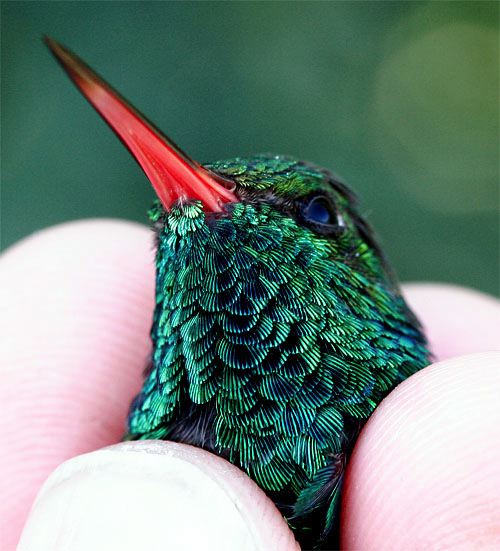 Week One of our annual
Week One of our annual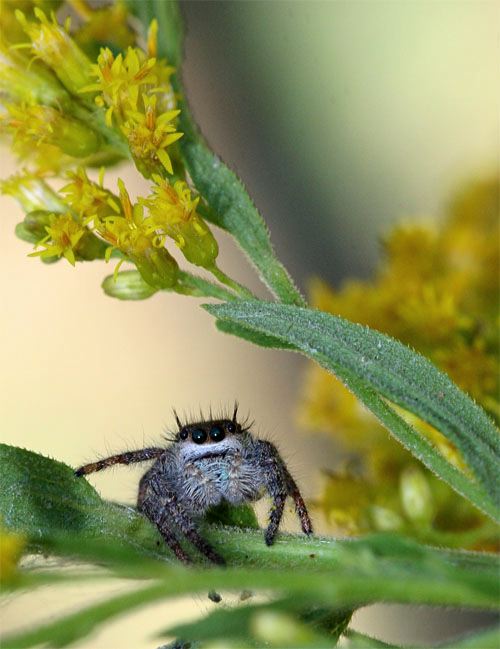
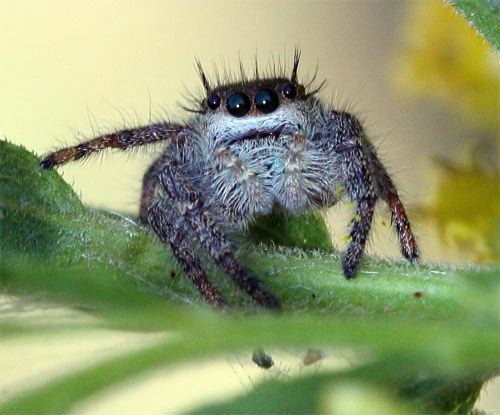
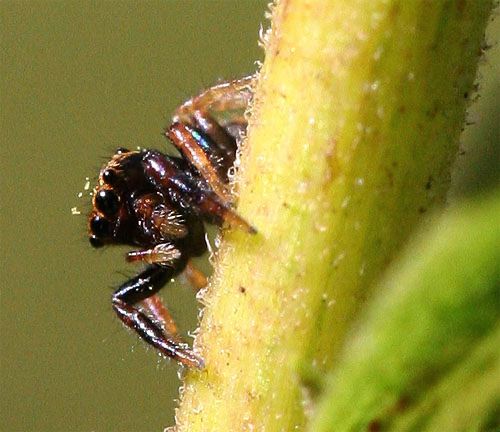
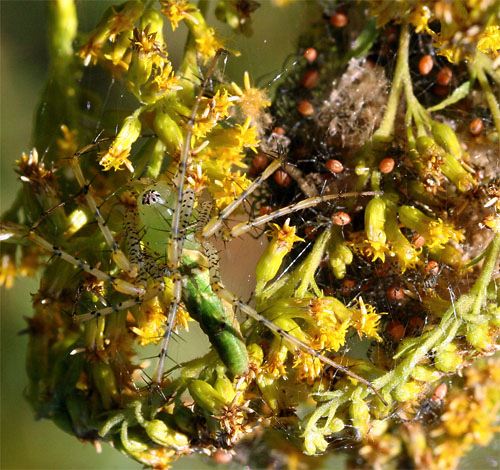
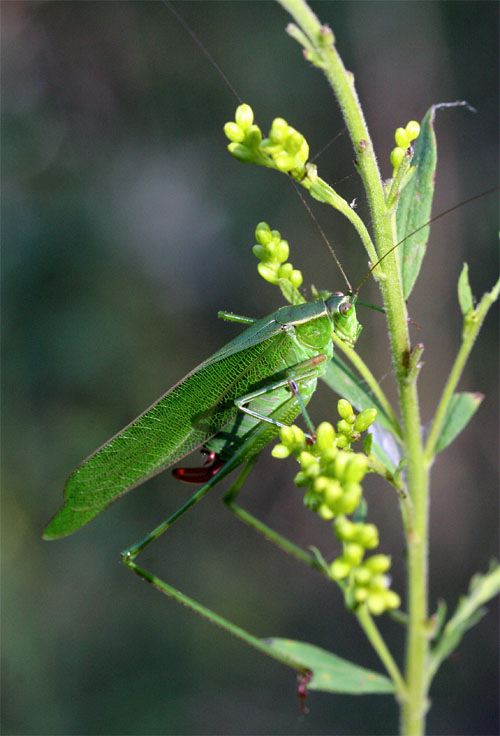
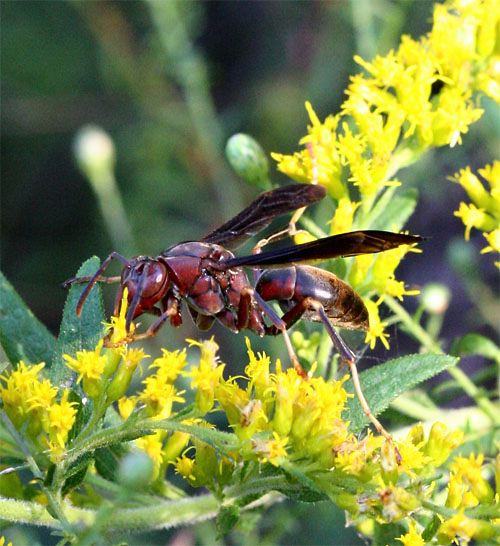
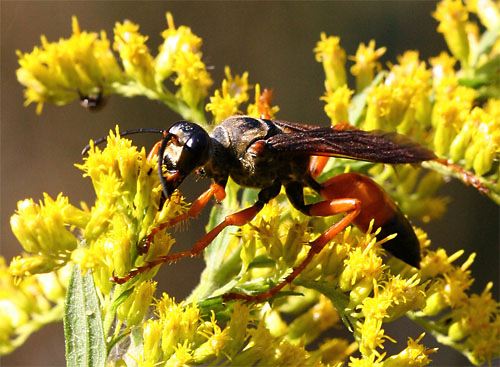
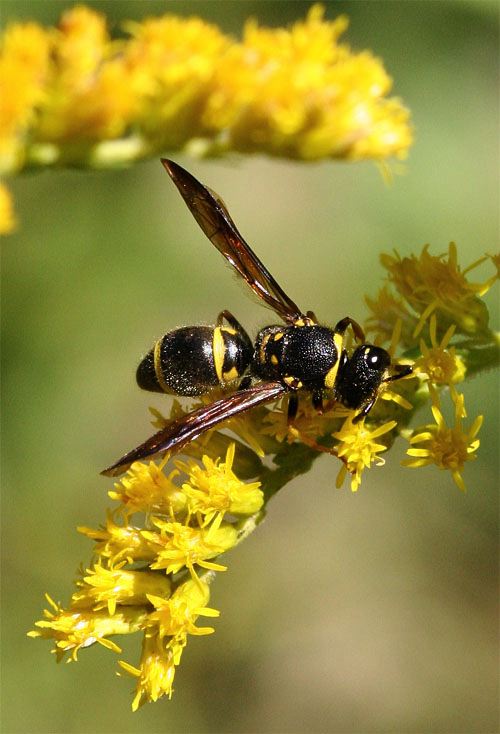
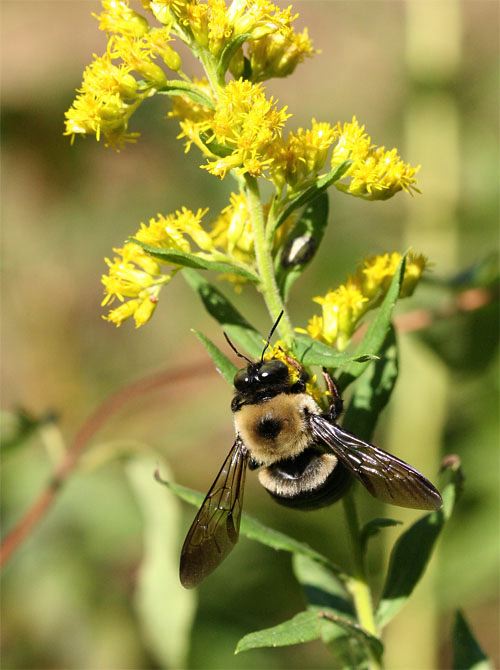
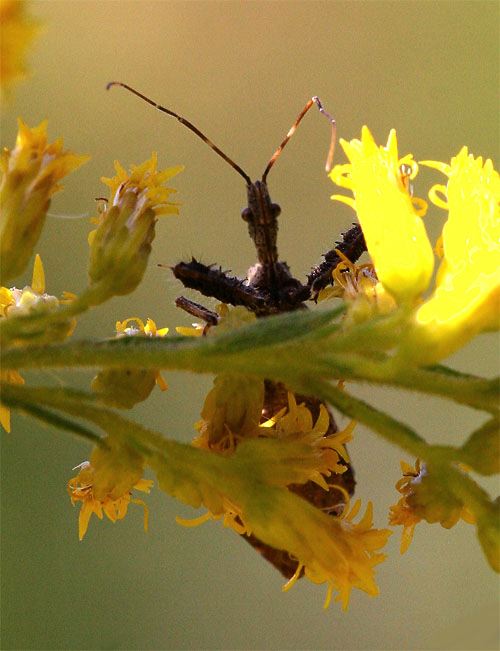
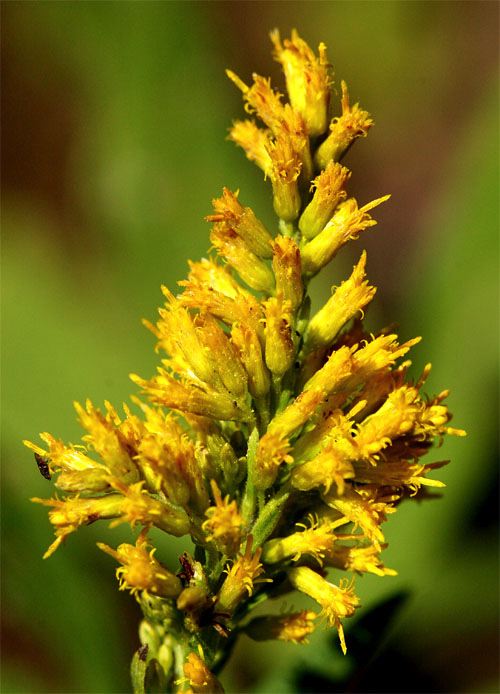
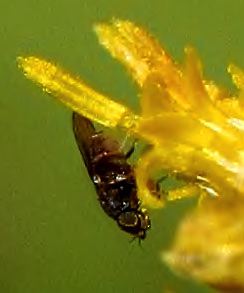 It's a tiny unidentified fly barely one-sixteenth of an inch long--a potential pollinator for Goldenrod but just the sort of snack a Spined Assassin Bug might go looking for to satisfy its hunger.
It's a tiny unidentified fly barely one-sixteenth of an inch long--a potential pollinator for Goldenrod but just the sort of snack a Spined Assassin Bug might go looking for to satisfy its hunger.

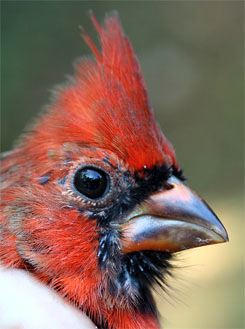
 Please report your
Please report your Oct 15 to Mar 15:
Oct 15 to Mar 15:
